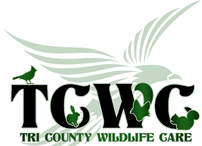Trap-Neuter-Return
DEFINITIONS
- Feral Cat - A feral cat is a domestic feline that has returned to the wild and lives with little or no assistance from humans. It is distinguished from a stray cat, which is a pet cat that has been lost or abandoned. The offspring of a stray cat can be considered feral if born in the wild.
- 'TNR' - Trap, Neuter, Return is one of the methods used by animal control organizations worldwide to control the population of Feral cats. There is a closely-related method, termed 'TVHR', for Trap, Vasectomy, Hysterectomy, Release used as an alternate, with claims of greater success in reports including this one from the Journal of the AVMA.
- 'TTAVR' - Trap, Test, Alter, Vaccinate, and Release is a more comprehensive program in use in a few locales. You can read more about this method in THIS DOCUMENT.
- 'Catch and Kill' - The most common method used to try to control the population of Feral cats.
FERAL CAT PROBLEMS
Feral cats are often accused of being a nuisance, and of being a threat to 'domestic' cats or other pets who are outside the house. This can certainly be the case, as ferals tend to be more aggressive due to their lack of socialization and elevated 'wild' hormone levels and associated tendencies. This issue is not well documented with verifiable data.
One of the issues that is reasonably well documented is the threat posed by feral cats to wildlife. It is estimated (with backup data) that feral cats are responsible for the death of billions of birds and small mammals worldwide - even threatening some endangered species in a few locales. In the U.S. alone, it is estimated that there are 70 million feral cats, and that they are responsible for the extinction of as many as 33 different species.
WHAT IS THE TRAP/NEUTER/RETURN PROCESS?
TNR is a clearly defined process in which a feral cat is humanely trapped, following instructions such as those found HERE. In the Amador county region, you can 'borrow' a suitable trap from the Amador County Animal Control and Adoption Center. Once trapped the cat is transported to a veterinarian to be sexed and neutered. In Amador county, you can take the cat to one of the participating veterinarians listed HERE where the procedure will be performed free of charge.
Once the cat has recovered from the surgery, it should be returned to the location where it was captured.
WHY TRAP/NEUTER/RETURN?
TNR is a humane method to reduce the growth of feral cat populations by eliminating the ability of the treated animals to reproduce. Data has shown very clearly that the Catch and Kill method does not control the population, and while there are studies which have shown the TTAVR and TVHR methods to be more effective, they are both also more expensive.
TNR works for a broad range of reasons. Neutered cats show far less aggressive behavior, reducing their impact on both wildlife and domestic pets. They also exhibit reduced territorial marking behaviors, while retaining the hunting instincts that can help with unwanted rodent populations.
There are no 'quick fixes'; but it has been shown that - over time - a good TNR program does indeed control the population in feral cat colonies without the inhumane euthanasia of innocent animals.
- Feral Cat - A feral cat is a domestic feline that has returned to the wild and lives with little or no assistance from humans. It is distinguished from a stray cat, which is a pet cat that has been lost or abandoned. The offspring of a stray cat can be considered feral if born in the wild.
- 'TNR' - Trap, Neuter, Return is one of the methods used by animal control organizations worldwide to control the population of Feral cats. There is a closely-related method, termed 'TVHR', for Trap, Vasectomy, Hysterectomy, Release used as an alternate, with claims of greater success in reports including this one from the Journal of the AVMA.
- 'TTAVR' - Trap, Test, Alter, Vaccinate, and Release is a more comprehensive program in use in a few locales. You can read more about this method in THIS DOCUMENT.
- 'Catch and Kill' - The most common method used to try to control the population of Feral cats.
FERAL CAT PROBLEMS
Feral cats are often accused of being a nuisance, and of being a threat to 'domestic' cats or other pets who are outside the house. This can certainly be the case, as ferals tend to be more aggressive due to their lack of socialization and elevated 'wild' hormone levels and associated tendencies. This issue is not well documented with verifiable data.
One of the issues that is reasonably well documented is the threat posed by feral cats to wildlife. It is estimated (with backup data) that feral cats are responsible for the death of billions of birds and small mammals worldwide - even threatening some endangered species in a few locales. In the U.S. alone, it is estimated that there are 70 million feral cats, and that they are responsible for the extinction of as many as 33 different species.
WHAT IS THE TRAP/NEUTER/RETURN PROCESS?
TNR is a clearly defined process in which a feral cat is humanely trapped, following instructions such as those found HERE. In the Amador county region, you can 'borrow' a suitable trap from the Amador County Animal Control and Adoption Center. Once trapped the cat is transported to a veterinarian to be sexed and neutered. In Amador county, you can take the cat to one of the participating veterinarians listed HERE where the procedure will be performed free of charge.
Once the cat has recovered from the surgery, it should be returned to the location where it was captured.
WHY TRAP/NEUTER/RETURN?
TNR is a humane method to reduce the growth of feral cat populations by eliminating the ability of the treated animals to reproduce. Data has shown very clearly that the Catch and Kill method does not control the population, and while there are studies which have shown the TTAVR and TVHR methods to be more effective, they are both also more expensive.
TNR works for a broad range of reasons. Neutered cats show far less aggressive behavior, reducing their impact on both wildlife and domestic pets. They also exhibit reduced territorial marking behaviors, while retaining the hunting instincts that can help with unwanted rodent populations.
There are no 'quick fixes'; but it has been shown that - over time - a good TNR program does indeed control the population in feral cat colonies without the inhumane euthanasia of innocent animals.

